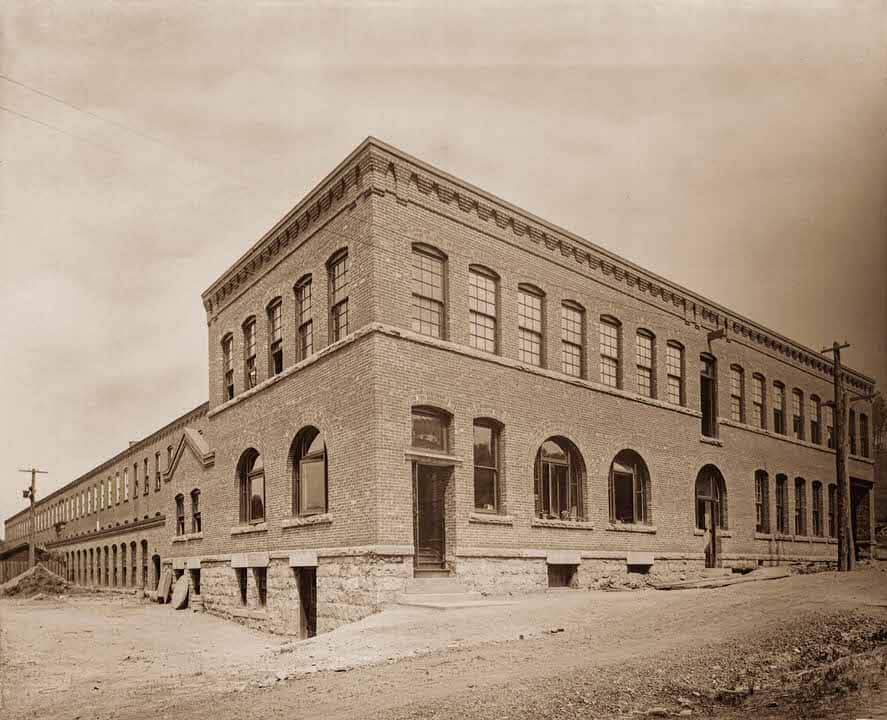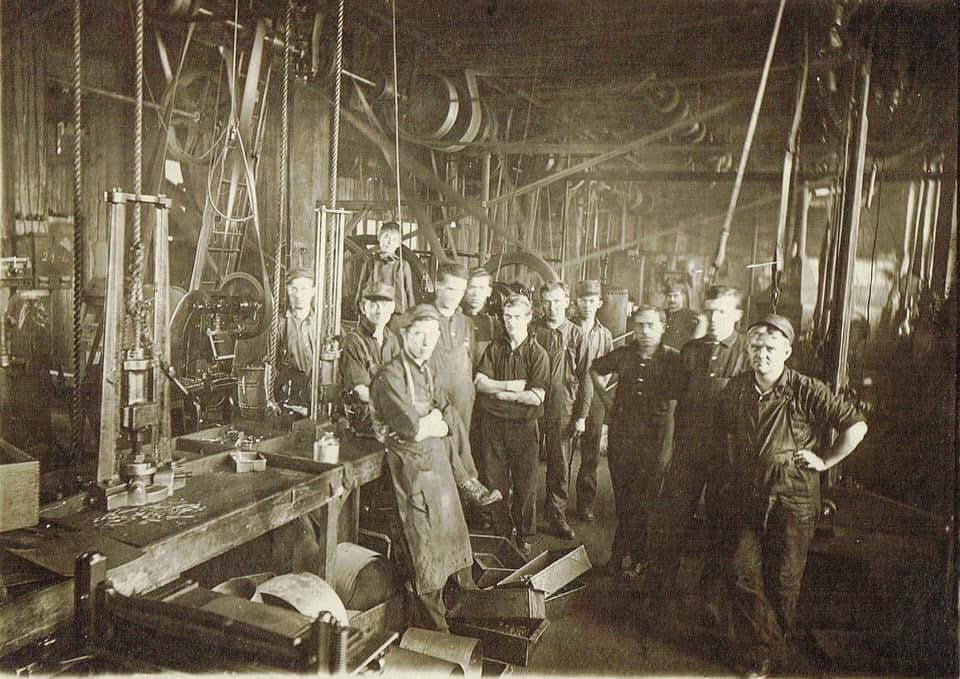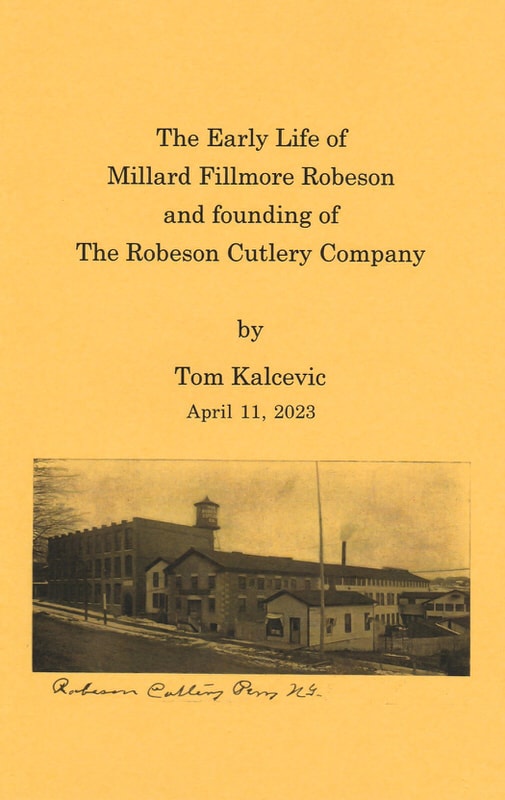Queen Cutlery History – Historical Documents
Here is a very large collection of documents, catalogs, product flyers, photos and articles generated by or about Queen Cutlery Co, Schatt & Morgan and affiliated companies.
Only here can you read the comprehensive history of Queen Cutlery by David Krauss, Ph.D.
Scroll down the page to see rare and informative documents from the history of Queen City, Queen Cultery and Schatt & Morgan. Be sure to see other pages in this section
The Rise and Fall of Queen Cutlery
David A. Krauss Ph.D. has written a comprehensive and captivating history of Queen Cutlery Co., from its origins at Schatt & Morgan in the late 19th century, through to its final days in 2018.
For an overview of Queen Cutlery history, read the article below.
We at Queen Cutlery History are grateful to David for his generous contributions.
Download
Click here to view The Rise and Fall of Queen Cutlery
An Overview of Queen Cutlery Company History 1918 – 2018
David A. Krauss Ph.D.
“Queen City Cutlery Company” (known now as “Queen Cutlery Company”) is the direct descendent of Schatt & Morgan Cutlery Company. Both used the same factory. Both survived numerous upheavals until each company was forced to declare bankruptcy. Schatt & Morgan was a victim of the Great Depression, ultimately purchased by Queen in 1933. The circumstances that led to Queen’s recent demise are not yet as clear.
Queen was a small-scale manufacturer that made cutlery In Titusville PA from about 1918 to 2018. It was one of many beneficiaries of opportunities afforded to earlier companies like Schatt & Morgan. Tariffs on imported cutlery that began in the late 1800s allowed American manufacturers to create their own cutlery unhindered by guilds or European traditions. Thus, the so-called “Golden Age” of American cutlery was born. To understand the history of Queen Cutlery one must also understand the historical connection to Schatt & Morgan.
Schatt & Morgan began as an import house in New York City in 1895 but moved to Schatt’s hometown of Gowanda, New York sometime in 1896 or early in 1897 where they purchased the Platts’ cutlery plant. The company made knives there from 1897 until 1902, at which time they moved to Titusville Pennsylvania when they were invited to relocate by the local Industrial Association which offered financial incentives and a larger facility for their manufacturing needs.
Things generally went well for the company through the First World War. But shortly afterward a series of events including the great influenza epidemic of 1918, the scarcity of available workers after World War I, the firing of five employees in 1918, and the death of the factory supervisor in 1921, that would each contribute to Schatt & Morgan’s demise.
The five Schatt & Morgan employees who were fired together in 1918 were the same men who would later start the Queen City Cutlery Company. It appears that they were fired for “moonlighting” in the factory and making skeleton knives (knives without bolsters or handle materials), which they then likely sold to jewelry manufacturers in New York City to finish. They were all fired when this off-the-books “sideline” was discovered.
They then proceeded to initiate their own cutlery venture but did not incorporate until 1922. However, their collective expertise made them real competitors to a diminished Schatt & Morgan from the moment they set up shop. Eleven years later in 1933, they purchased the bankrupt Schatt & Morgan at a Sheriff’s auction and moved “Queen City Cutlery” into the former “Schatt & Morgan Cutlery” factory.
The irony of their situation could not have been lost on those five men who returned as the new owners of the place from which they had been fired.
The five men who founded Queen City Cutlery in 1922 were Frank Foresther (1883-1939), Geza Revitzky (1880- 1979), E. Clarence Erickson (1897-1961), Jesse F. Barker (1895-1970) and Harry L Matthews (1897-1967). Harry Matthews married Geza Revitzky’s daughter, and their two sons were active in the business until 1975. Frank Foresther’s son, Louis, was also active in the company from 1939 until his death in 1956. Clarence Erickson’s daughter Eleanor married Walter Bell, who became President in 1961 when his father-in-law died. Bell was President of the company in 1969 when it passed out of family hands and was purchased by the Servotronics Corporation of Buffalo, New York.
Servotronics owned Queen until 2012. They continue to own the Ontario Knife Company of Franklin New York, which they purchased in 1967.
After Erickson’s son-in-law retired in 1972, Servotronics provided the leadership for the next forty years. Bob Breton was President of Queen Cutlery Company when it was sold to Kenneth R. Daniels (Daniels Family Cutlery) in 2012. Daniels named long time Queen employee Jennie Moore Company President. Moore left in 2016 and CEO Ken Daniels assumed the additional position of President. He shuttered the factory and declared Bankruptcy in January of 2108.
But let’s circle back to the beginnings of Queen City Cutlery again. Its important to know that Queen was an early innovator in the use of stainless steel for cutlery, arguably one of its most ambitious and successful accomplishments was Queen’s early collaboration with Cyclops Steel to develop functional stainless steel for cutlery. Cyclops had produced the first nickel-chromium steel in America in Titusville in 1917. As early as 1926 Queen City Cutlery was listed in regional trade publications as manufacturers of “High Grade Stainless Steel Cutlery.”
Queen was able to produce a line of functional stainless 440 steel knives beginning in the mid 1920’s. They called their blade material “Queen Steel”.
Queen’s willingness to experiment with cutlery steel was evident once again in 1999 when it began to use ATS-34 steel on master blades, and again in 2002 when it began using D2 tool steel for blades.
Queen used a wide variety of materials over the years to haft their knives. Some of the most exotic and rare handle materials included smoked (white) pearl, black lip pearl, abalone and mastodon (non-elephant) ivory, as well as the more traditional top of the line, “presentation grade” mother-of-pearl. Over the years the company also used various horn, antler, wood as well bone and molded plastics in various colors and “jiggings.”
Rogers jigged bone was used on many of Queen’s early knives, but by the mid- to late-1940’s, they began producing most knives in “Winterbottom bone” and may be best known for their use of Winterbottom handles produced in the Winterbottom factory in Egg Harbor, New Jersey. From about 1950 to 1959 Queen used that style of jigged bone almost exclusively.
From the 1950’s on, the use of less expensive plastic and nylon handles increased as a way to both reduce costs and improve durability. Queen had begun to haft most of its knives in the synthetic Winterbottom style by 1959. And although Queen used approximately 46 different tang stamps during the Company’s tenure, it appears that from about 1961 to 1971 the company stopped tang stamping its knives at all as a further cost cutting measure.
Queen resumed tang stamping in 1972 under Servotronics’ leadership, and returned to natural handle materials as collectors and users increased the demand.
As noted above, “Queen City Cutlery Company” shortened its name to “Queen Cutlery Company” in January 1946. This led to legal difficulties with the “Henry Sears & Son Cutlery Company” in 1948. They claimed they alone owned the legal right to use the word “Queen.” The dispute was resolved in 1956 when Queen hired a trademark registration company to file “Certificates of Registration” in all contiguous 48 states. Henry Sears & Son went out of business in 1958 for other economic reasons.
On another legal front, Queen was granted a patent for an Erickson designed automatic knife, “the Jet” in 1950. The 1958 Switchblade Act made automatic knives illegal so the company got rid of all unused parts by mixing them into concrete that was used to make a driveway. In 2017 a new automatic knife, patterned after the KA-BAR “Grizzly” would be introduced and sold as “The John Henry Express.”
Under Servotronics, Queen began to issue limited edition knives in 1972. The first was the “Drake Well Barlow” commemorating the 1859 discovery of oil in Titusville. In 1976 Queen issued a number of American Bicentennial commemorative knives using a special “Q76” tang stamp.
From 1977 onward Queen released a number of “Series” knives, some as limited editions, and some knives in general production. The limited edition “Master Cutler Series”, for example, was comprised of individually boxed knives released over several years.
The general production “Rawhide Series” (a total of ten folders as well as three fixed blades) were featured in catalogs for a number of years beginning in 1980 through the 2000, but not all patterns were offered every year. Another example of a general production series was the “Burnt Bone” series, nine patterns of pocketknives available for a few years in the 1990s.
The company also produced separate series of “Queen Classics”, “Schatt & Morgan Premier”, “Keystone”, as well as “Queen City” knives; initially for dealers, but some through catalogs beginning around 2005 and running through last few years of Queen’s existence.
Queen’s most ambitious series was a yearly limited edition release (of around 500) reproduction Schatt & Morgan knife sets that debuted in 1991. Over the span of 20 years a total of 120 different knives were created for what would become known as the “Keystone Series” which today are highly sought after due to their high quality and limited production.
Similarly, the “File & Wire Select Series” of Schatt & Morgan limited production releases (of 500 or less) per knife was initiated in 1998. Initially, individual File & Wire knives were released about every four to six months in a different pattern, blade shape or handle. The File & Wire series featured ATS-34 steel on all master blades and continued until through 2017.
But aside from the File & Wire knives Queen was not always consistent in documenting the use of ATS-34 steel on blades. During the late 1990s the company used ATS-34 on some Schatt & Morgan, some Queen, and some Robeson master blades.
Servotronics’ ownership of Robeson permitted Queen to produce knives with the Robeson “MasterCraft,” “PocketEze,” and “ShurEdge” shields and blade etches from 1995 to the early 2000’s. Some Robeson knives were likely produced through the early 2000’s, and some carry the ATS-34 blade etches. All were produced to very high standards.
In 2011, under the guidance of Queen Cutlery Company Historian David Clark, Queen initiated a limited production, “Heritage Series”; seven historically accurate knives finished with the same type of carbon steel for blades and backsprings and Norway iron for bolsters as found on knives in the earliest known Schatt & Morgan catalog. Conceived as an ongoing yearly series of knives, 300 hundred sets were produced but the series was only produced one year due to manufacturing difficulty and a change in company ownership.
After 2012, there was an increased emphasis on “limited production” offerings for both Queen and Schatt & Morgan stamped knives.
Over the years Queen made many contract knives for knife clubs, national organizations, private labels, and other knife companies like Case Classics, Marbles, Moore Maker, Remington, Winchester, etc. Many a modern, well-made pocketknife with another company’s name on it actually came out of the Queen factory. Queen may never generally be as well known or well respected, as it should have been for the workmanship of its own knives.
In reviewing the more recent history of Queen Cutlery, it appears that 2006 was a pivotal year for the company. That was the year they lost the talent, skills, and experience of long time Queen employee, master cutler and Queen’s chief knife designer, Bill Howard. Howard left the company and started “Great Eastern Cutlery” in partnership with Ken Daniels, creating limited runs of traditional bench-made pocketknives that quickly found favor with collectors. Daniels would sell his part of Great Eastern and purchase Queen in 2012.
Reviewing catalogs from 2012 forward one can get a sense of mounting problems. For example, the company’s longstanding variety of abalone, mother of pearl or other exotic handled knives do not appear in a Queen catalog after 2013. In the subsequent catalogs standard production offerings seemed fewer. But perhaps most indicative of the company’s hard times was the 2016 catalog’s change in Queen’s historically strong warranty to “All Queen Cutlery Company product marked EDC, Every Day Carry are not covered under warranty.”
The final 2017 catalog featured “The John Henry Express” automatic knife on the cover. It was the company’s last hurrah. Sadly, Daniels Family Cutlery declared bankruptcy in January of 2018 and shuttered the factory, one hundred years after five men were fired from there in 1918. They returned as owners in 1933 but it’s unlikely that time will come again. Many of us mourn the passing of that era.
© copyright 2019 used by permission.
The author wishes to express his gratitude to a number of Queen Cutlery collectors/historians who have helped him along the way, especially David Clark, Fred Fisher, Dan Lago, the late John Lussier, and Fred Sampson. Your encouragement, support, and generous sharing of research have been invaluable in the production of this writing. Thank-you.
David Krauss is the author of American Pocketknives: The History of Schatt & Morgan and Queen Cutlery,
His book is available at Americanpocketknives.com
David Clark and David Krauss are the co-authors of 2005 monograph The Dollar Knife Corporation.
Available from the authors
The Joe Dial Interview
Queen Cutlery History’s David Clark recently met up with well known, long-time Queen knife collector Joe Dial at his home in Alabama. The discussion centered around Joe’s experiences in the early days of his collecting “career”.
Most classic car enthusiasts have heard tales of once in a lifetime “barn finds” whereby somebody comes upon a rare, original, virtually untouched Corvette, Ferrari or whatever. Joe’s stories of his discoveries of mint Queen knives are the knife collector’s equivalent.
Traveling across the American South, particularly in Alabama and Mississipi, starting in the 1970’s and ’80’s, Joe and his wife Betty discovered and acquired many new, mint Queen knives in now forgotten small town shops. Joe continued to collect Queen cutlery for decades and is a legend among us knife collectors. Friendly and outgoing, he also acquired many friends along the way.
Just click the play button in the audio file below to have a listen.
Joe Dial Interview
Review: The Early Life of Millard Fillmore Robeson and founding of the Robeson Cutlery Company
Robeson Cutlery Company ceased operations in 1965 after 73 years in business. Some collectors of Queen and Schatt & Morgan knives know that Ontario Knife Company, also owned by Queen’s then parent company, Servotronics, acquired the trademarks of Robeson Cutlery in 1971. Then, for almost 25 years, beginning in 1993, Robeson branded knives were manufactured and sold by Queen Cutlery. Robeson tang stamps from the Queen era can be seen in a supplement to our comprehensive Tang Stamp Guide.
The long history of Robeson, and the depth and quality of the firm’s product lines is much broader and deeper than the brand’s faded presence of the late 20th and early 21st centuries might imply. Fortunately for all of us, author and collector Tom Kalcevic has been painstakingly documenting that history and those products for more than a quarter century. In 2000 Kalcevic self-published Knives Can Talk!, Second Edition, The Story of the Robeson Cutlery Co. as Told From Their Knives, Cutlery Products and Local History. This highly sought-after book, now out of print, presents a detailed history of Robeson and it’s myriad cutlery products. The story is enhanced by hundreds of color photos of significant Robeson cutlery items. From 2002 through 2004 Tom provided his readers with 3 supplements to the book at no charge, as new information came to light.
With the release of a new booklet entitled The Early Life of Millard Fillmore Robeson and founding of the Robeson Cutlery Company, he provides further insights into the man behind the brand. Nobody can accuse Mr. Kalcevic of brevity in entitling his books and he applies the same level of comprehensive detail to the inner pages. He is enthusiastic about cutlery, especially Robeson, and keenly interested in the fact that Robeson knives were designed and manufactured more or less in his own backyard in the Finger Lakes region of New York State.
If the name Millard Fillmore Robeson seems somewhat familiar, it should. Robeson was named after the 13th President of the United States, whose family had been connected with the Robeson’s since the late 18th century. This little booklet comprises a timeline, commencing in the 1790’s, which traces the migration of the Robeson and Fillmore families from Bennington, Vermont into the Finger Lakes and later Western, New York. Woven into the timeline are significant events in the lives of key family members, particularly Millard Fillmore and Millard Robeson. Important to our
interest is the path Robeson followed from stamped culinary utensils to cutlery and the establishment of the business which bore his name. The narrative of the timeline proceeds through the 19th century and comes to a conclusion in 1904, the year following M.F. Robeson’s death at age 56. Of course there is much more to the story of Robeson Cutlery. For that you would have to read Tom Kalcevic’s earlier book, Knives Can Talk …”.
The timeline and chronicle comprise 10 of the booklet’s 23 pages. The remaining pages contain captioned black & white photos of Robeson products and relevant documents. The booklet concludes with a regional map of New York with significant locations highlighted.
The author is providing this well-done publication free of charge to those interested in learning more about the founder of Robeson Cutlery, a significant player in New York and American cutlery history. To request your copy, send your name and mailing address to Brent Morris at bkmorris49@yahoo.com. BW
Historical Documents Collection
Queen Display Cases 1950-1977
Click to view
Clauss Shear Co. Catalog No.56
Click to view
The Collins Company Axe Catalog 1954
Click to view
Military Fixed Blade Knife March 1985
Click to view
Queen Packaging Inserts 1950's - '70's
Click to view
Queen 1950's Catalog Photos
Click to view
Queen Financial Documents 1946-48
Click to view
Queen Cutlery - Cutler's Hammer
Click to view
Robeson Cutlery Documents 1957-62
Click to view
Queen Best Selling Knives- 1st half 1982
Click to view
Pres Reagan Knife, Meadville Tribune
Click to view
Queen Pearl & Smoked Pearl Prices 1968
Click to view
Queen "Marks Line" Shears 1974
Click to view
A Few Promotional Photos from the 1970's
Click to view
Queen Cutlery Ad in Hardware Age - 1957
Click to view
Schatt & Morgan Purchase Order Form
Click to view
Schatt & Morgan Warranted Poster
Click to view
Queen Cutlery Shot Show Special Ad
Click to view
Queen Sales Manager Letter of 1980
Click to view
Queen March 1977 Retail Price Stickers
Click to view
Queen 1981 NKCA Annual Knife Ad
Click to view
Drake Well Barlow 1972 News Clipping
Click to view
Master Cutler Knife & Package Photos
Click to view
US Patent No. 2728139, Erickson
Click to view





